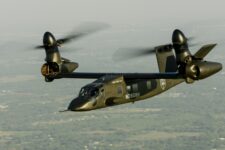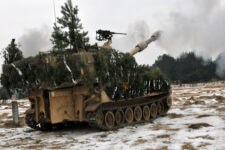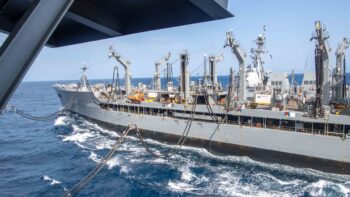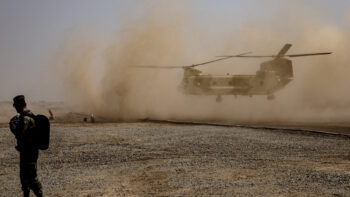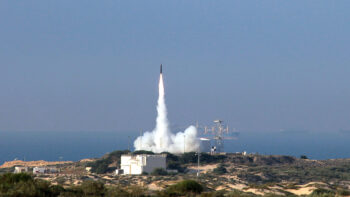
Gen. James McConville
WASHINGTON: As budget battles intensify in the face of COVID relief and the shift to the Pacific, Army Chief of Staff James McConville argues that the Army’s new missiles, aircraft, & networks can help the other services in long-range, fast-paced, high-tech combat.
“The future is all about range and speed,” Gen. McConville declared, and longtime Army watchers perked up. With the other services circling for a prophesied budgetary “bloodletting”, the Army really needs a clear and catchy argument for its modernization program.
Yes, Army leaders have previously touted the range and speed of specific weapons systems they’re developing – especially hypersonic & other long-range missiles, manned and unmanned Future Vertical Lift aircraft, and command networks capable of transmitting targeting data in seconds. But yesterday’s remarks by McConville were the first time the four-star Army Chief of Staff himself has clearly tied all those technologies together into a single argument for the Army’s relevance in future wars.
“We tapped something relatively new in the discussion of speed and range,” said Thomas Spoehr, the Heritage Foundation scholar who hosted Wednesday’s webcast by McConville. “I liked the way that Gen. McConville brought out the need for physical speed” – for example, how FVL is vastly faster than existing helicopters – “but also brought it up in relation to the need for speed of decision too” – for example, how the new networks can share targeting data at unprecedented rates.
“I think both those arguments are useful in explaining the need for these systems,” the retired Army lieutenant general said.
“Sydney, it’s interesting that you should notice this, because I did as well,” agreed retired Lt. Gen. Guy Swan, VP of the Association of the US Army. “The modernization efforts you and the Chief referenced are indeed about speed and range.” That, Swan said, makes them especially relevant for the vast, watery expanses of the Pacific, where traditional ground troops are limited to island-hopping campaigns.
“So what you are hearing from [Gen. McConville], General Murray, and others is an articulation of this in a way that we haven’t heard before, but actually makes sense given the lessons coming out of initiatives like Project Convergence,” the Army’s experimental wargames last fall, Swan continued. As new weapons move from PowerPoint to prototype to production, he said, “things are starting to gel in the Army’s modernization program — which is why the U.S. Army must be provided with the resources necessary to continue its modernization objectives.”
McConville made clear that money was on his mind. “We have to show that every dollar that Congress gives us, we’re going to use appropriately,” he said. “What you can’t afford to do is waste one dollar, and we’ve put in a lot of processes,” from grueling budget reviews (nicknamed “Night Court”) that transferred billions of dollars to new ways of recovering de-obligated funds.
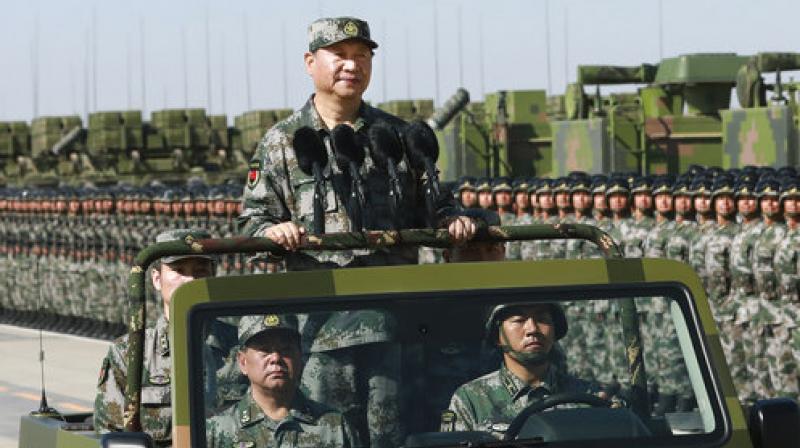
Chinese President Xi Jinping inspects PLA troops
The Army faces an uphill budget battle because air, sea, and cyber-power have taken first place in a strategy increasingly focused on China. “Speed and range” seem attributes more associated with jets, ships, and submarines armed with guided missiles. But McConville argued new Army units built around long-range missiles, cyber/electronic warfare, and extensive use of space assets can provide unique advantages to the joint force.
“The multi-domain task forces with long-range precision fires [and other] long-range effects fit very well into Adm. Davidson’s concept of how he wants to compete” in the Indo-Pacific, McConville said, referring to the INDOPACOM commander.











